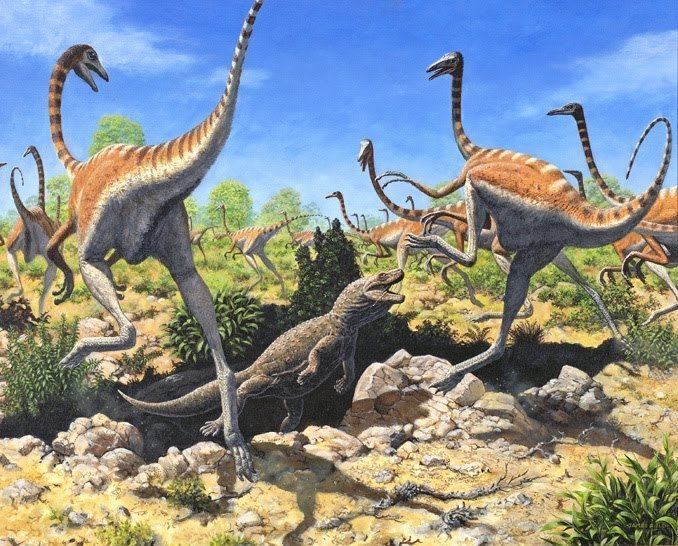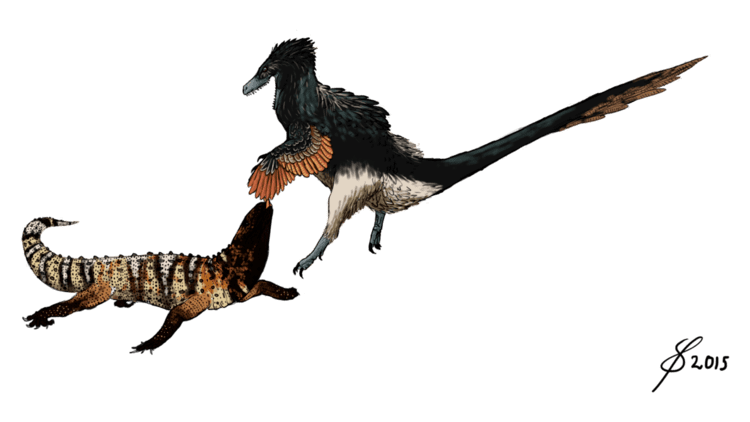Superorder Lepidosauria Species †P. canadensis Phylum Chordata Rank Genus Subclass Diapsid | Infraclass Lepidosauromorpha Superfamily Varanoidea Scientific name Palaeosaniwa Higher classification Varanidae Order Scaled reptiles | |
 | ||
Similar Estesia, Aigialosauridae, Kaganaias, Reptile, Varanus amnhophilis | ||
Palaeosaniwa canadensis is an extinct species of carnivorous lizard from the late Cretaceous of North America. The name, given by Charles Whitney Gilmore in 1928, means "ancient Saniwa from Canada".
Contents

Description

Palaeosaniwa was roughly comparable to a large monitor lizard (Varanidae) in size. Measuring around 3–3.5 m (9.8–11.5 ft) in length, it is among the largest terrestrial lizards known from the Mesozoic period (though Asprosaurus may compete with it in size). It is similar to modern varanid lizards (particularly the Komodo dragon) in having bladelike teeth with minute serrations. These teeth would have been effective for seizing and cutting large prey items, and suggest that Palaeosaniwa fed on other vertebrates. Adult Palaeosaniwa would have been large enough to prey on any of the birds or mammals known from the time, small dinosaurs, and the eggs and juveniles of large dinosaurs.
Distribution

Palaeosaniwa was originally described from the late Campanian of Alberta. More recently it has been reported from the late Campanian of Montana, and the late Maastrichtian of Montana and Wyoming. It is known primarily from isolated teeth and vertebrae, but two partial skeletons have also been discovered. The type species, P. canadensis, is from Alberta. Although the Maastrichtian Palaeosaniwa has traditionally been referred to this species, it succeeds it by roughly ten million years. Given the distance in time between these animals, they are likely to represent distinct species, but the available fossils are too incomplete to be certain.
Relationships

Palaeosaniwa is a member of the Platynota, a group that includes the monitor lizards (Varanidae) and Gila monsters (Helodermatidae). Originally, it was thought to be a member of the Varanidae, but has also been interpreted as a relative of the Helodermatidae. The most recent analysis places Palaeosaniwa outside of either Varanidae or Helodermatidae, as a stem member of the Varanoidea. Its precise affinities remain poorly understood, but it may be related to other Late Cretaceous, North American carnivorous lizards such as Parasaniwa, Paraderma, Labrodioctes, and Cemeterius.
